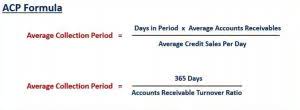
The organization need not engage in more than a reasonable effort to obtain the necessary information to determine the number of independent voting members of its governing body and can rely on information provided by such members. The governing body is the group of one or more persons authorized under state law to make governance decisions on behalf of the organization and its shareholders or members, if applicable. Assets held for the production of income or for investment aren’t considered to be used directly for charitable functions even though the income from the assets is used for charitable functions. It is a factual question whether an asset is held for the production of income or for investment rather than used directly by the organization for charitable purposes.
Al-Qaida chief’s ‘pattern of life’ was key to death
Section 4958 doesn’t apply to any fixed payment made to a person pursuant to an initial contract. This is a very important exception, because it would potentially apply, for example, to all initial contracts with new, previously unrelated officers and contractors. The intermediate sanction regulations are important to the exempt organization community as a whole, and for ensuring compliance in this area. The rules provide a roadmap by which an organization can steer clear of situations that may give rise to inurement. If an organization files an amended return, however, the amended return must be made available for a period of 3 years beginning on the date it is filed with the IRS.
More In File
- In such cases, the organization should try to implement as many steps as possible, in whole or in part, to substantiate the reasonableness of benefits as timely and as well as possible.
- If the organization reported on line 1 more than $5,000 of grants or other assistance to any domestic organization or to any domestic government, the organization must complete Parts I and II of Schedule I (Form 990).
- The organization can (but isn’t required to) explain the transfer in Schedule O (Form 990).
- Schedule O (Form 990) must be completed and filed by all organizations that file Form 990.
- Below is the top portion of the initial page of the 990-PF for the Chandhok Charitable Trust in Louisiana.
- You might be able to find some useful connections for your organization.
For tax years beginning before January 1, 2021, section 501(c)(21) black lung trusts that could not use Form 990-N, e-Postcard (see Who Must File, earlier), used Form 990-BL to meet the reporting requirements of section 6033. A section 501(c)(21) black lung trust, trustee, or disqualified person liable for section 4951 or 4952 excise taxes also used Form 990-BL to report and pay those taxes. If a taxpayer makes a payment to a charitable organization in a fundraising campaign and receives benefits with an FMV of not more than 2% of the amount of the payment, or $125, whichever is less, the benefits received have insubstantial value in determining the taxpayer’s contribution.

🔎 How much do you spend on your programs?
Don’t report a fundraising activity as a program service accomplishment unless it is substantially related to the accomplishment of the organization’s exempt purposes (other than by raising funds). On Form 990, Part VIII, column A, add line 6b (both columns (i) and (ii)), line 7b (both columns (i) and (ii)), line 8b, line 9b, line 10b, and line 12, and enter the total here. See the exceptions from filing Form 990 based on gross receipts and total assets as described under General Instructions, Sections A and B, earlier. Some lines request information reported on other forms filed by the organization (such as Forms W-2, 1099, and 990-T). If the organization is aware that the amount actually reported on the other form is incorrect, it must report on Form 990 the information that should have been reported on the other form (in addition to filing an amended form with the proper amount).
- There is an anti-abuse rule to prevent the disqualified person from effectively transferring property other than cash or cash equivalents.
- Enter on line 22 the unpaid balance of loans and other payables (whether or not secured) to current and former officers, directors, trustees, key employees, creator or founder, substantial contributor, or 35% controlled entity or family member of any of these persons, and persons described in section 4958(c)(3)(B).
- The IRS can refute the presumption of reasonableness only if it develops sufficient contrary evidence to rebut the probative value of the comparability data relied upon by the authorized body.
- If your organization pays $600 or more to persons not treated as employees, you may be required to file Form 1099-NEC, Nonemployee Compensation, or Form 1099-MISC, Miscellaneous Income.
- The local or subordinate organization must permit public inspection, or comply with a request for copies made in person, within a reasonable amount of time (normally not more than 2 weeks) after receiving a request made in person for public inspection or copies and at a reasonable time of day.
During this calendar year, X received reportable compensation in excess of $100,000 from Y for past services and would be among Y’s five highest compensated employees if X were a current employee. Y must report X as a former highest compensated employee on Y’s Form 990, Part VII, Section A, for Y’s tax year. All reportable compensation paid by the filing organization must be reported. Organizations must report compensation for both current and former officers, directors, trustees, key employees, and highest compensated employees.

How to Read a 990: What Do Donors Want to See?
A private college or university will be subject to the excise tax on net investment income under section 4968 only if four threshold tests are met. Answer “Yes” if the organization made a distribution from a donor advised fund to a donor, donor advisor, or related person during the organization’s tax year. For purposes of this question, a related person is any family member of the donor or donor advisor and any 35% controlled entity (as defined in section 4958(f)) of the donor or donor advisor. Complete line 36 only if the organization is a section 501(c)(3) organization and engaged in a transaction over $50,000 during the tax year with a related organization that was tax exempt under a section other than section 501(c)(3).
Documentation permitted by state law can include approved minutes, email, or similar writings that explain the action taken, when it was taken, and who made the decision. For this purpose, contemporaneous means by the later of (1) the next meeting of the governing body or committee (such as approving the minutes of the prior meeting), or (2) 60 days after the date of the meeting or written action. If the answer to either line 8a or 8b is “No,” explain on Schedule O (Form 990) the organization’s practices or policies, if any, regarding documentation of meetings and written actions of its governing body and committees with authority to act on its behalf. If “Yes,” describe on Schedule O (Form 990) the class or classes of such persons, the decisions that require their approval, and the nature of their voting rights.
Newsfeed Now: Federal warrant issued for Brian Laundrie …
Enter the amounts required to be reported (whether or not actually reported) in box 1 or 5 of Form W-2 (whichever is greater), box 1 of Form 1099-NEC, and/or box 6 of Form 1099-MISC, issued to the person for the calendar year ending with or within the organization’s tax year. For institutional trustees that don’t receive a Form 1099-NEC or 1099-MISC, enter the amount that the organization would how to read a 990 have reported in box 1 of Form 1099-NEC or box 6 of Form 1099-MISC if the form(s) had been required. Answer “Yes” on line 16a if, at any time during its tax year, the organization invested in, contributed assets to, or otherwise participated in a joint venture or similar arrangement with one or more taxable persons. Disregard ventures or arrangements that meet both of the following conditions.
No comment yet, add your voice below!